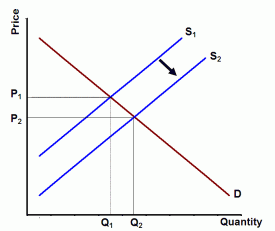Perhaps it’s a sign of increasing desperation, but Washington’s coal lobby is trotting out some real whoppers lately. Let’s take a look at what the Bellingham coal port people said in a recent email under the Orwellian banner, “The Truth About Coal Consumption.”
You get a flavor for the folks behind the Gateway Pacific Terminal (GPT) right off the bat when they claim, in the very first sentence of their email, that their opponents are engaged in a “religious war on coal.” (Note to locals worried about noise, traffic, and pollution in your community: you are extremist fanatics.)
GPT’s “Truth About Coal” email is, in fact, a hash of distortions and fallacies. In the interest of time, I’ll confine myself to dismantling only two of the bigger mistakes.
Bad argument #1: Increasing the supply of coal does not affect demand. (If this argument seems counter to principles of basic economics, that’s because it is.)
GPT blunders into a discussion of economics that is frankly baffling. Apparently lacking any ability to explain their market, the GPT email cites a 2010 newsletter article by Richard Morse and a recent Crosscut piece by Daniel Jack Chasan. Here’s Chasan:
Blocking construction of a port at Cherry Point, or Longview, or any place else in the Pacific Northwest won’t reduce by even one lump the amount of coal burned in Chinese or Indian power plants.
Chasan’s done good environmental policy reporting, but on this point he’s simply wrong. (Please see the update at the bottom of this post.) Consider the economic fundamentals to see how. The export facilities planned for Washington are intended to move more than 100 million tons of cheap US coal to Asian markets—a staggering volume. The sole purpose of these ports, in other words, is to increase the supply of coal.
Now, can anyone tell me what happens to price when supply goes up?
If you guessed that the price goes down, you are correct. And if the price goes down, then consumer demand—in this case the demand for burning coal—goes up. That’s why one of the four basic laws of supply and demand is: “If supply increases and demand remains unchanged, then it leads to lower equilibrium price and higher quantity.”
For visual learners, here’s how economists display this information:
As the website EconPort describes this graph: “you can see that an increase in supply will cause the price to decline and the quantity to rise.”
If charts aren’t your bag then let me recommend resource economist Thomas Power who thoroughly debunked this pro-coal argument in his recent white paper, “The Greenhouse Gas Impacts of Exporting Coal From the West Coast.” Consider:
This result—that international competition to serve particular import markets will lower the prices that the importing countries have to pay—should not be startling. One of the major benefits of international trade is that it allows countries access to lower cost sources of supply.
So there’s no reason to think that Washington coal exports will simply displace other coal in the market. Instead, American coal exports will increase supply, bring down market prices, and thereby increase total consumption. Now you can argue about the extent to which increasing supply will boost demand—just as you can argue about the extent to which higher prices would dampen demand—but you can’t really argue about direction of the change.
But it gets worse. As Power points out in his paper, the damage of coal exports may actually be a bit worse than it looks on paper. That’s because lower prices will encourage China to build more new coal-burning power plants than they would otherwise, locking in elevated coal burning and pollution for decades to come.
Bad argument #2: Climate progress depends on exporting coal to China. (If this argument sounds crazy that’s because it is, indeed, completely crazy.)
The email references an Atlantic Monthly piece by James Fallows. The fact that GPT is using Fallows’ article as support for exporting coal is evidence that they haven’t bothered to actually read the darn thing. (Seriously, coal people, go read it now.) That said, they must have skimmed enough to mine a couple of selective quotes in order to attribute this belief to Fallows: “There is no story of climate progress without a story for coal. In particular, US-China progress on coal.”
So is Fallows really arguing for more coal exports and more coal burning?
No. No, he is not.
In reality, Fallows is simply pointing out that there’s a lot of coal being burned around the world and that China and the US should invest in joint R&D on burning coal in cleaner ways. Fallows wants to harness the power of American research institutions to develop technologies that can be implemented quickly in Chinese power plants. That’s a terrific idea. But it provides absolutely no support whatsoever to strip mining the Rocky Mountains to ship massive volumes of coal to China.
To wit, here’s what else Fallows says about coal:
…the by-products of coal’s combustion fill the air not simply with soot, smoke, and carbon dioxide but also with toxic heavy metals like mercury and lead, plus corrosive oxides of nitrogen and sulfur, among other pollutants…. Compared with most other fossil-fuel sources of energy, coal is inherently worse from a carbon-footprint perspective…
That’s right. Coal is inherently a bad deal for health and the environment. Given that we’re stuck with it for a while, we should try hard to clean it up to the extent possible. But doubling down on the mistakes we’ve already made is like prescribing whiskey for a hangover.
I’ll stop there for now. There are more claims in GPT’s email that deserve criticism, but I’ll save those for later installments on this blog. Stay tuned.
Update 8/12/11 — Chasan has a very good follow up article at Crosscut, in which he explores Power’s argument in more detail.


Comments are closed.